Table of Contents
ToggleArgentine Food For Personal Chefs
Welcome to the adventurous world of cuisine! As personal chefs, we are constantly on a quest for new and unique flavors. Today, let’s journey to South America and explore the vibrant and diverse dishes of Argentine cuisine. From the mountains to the sea, Argentina is a country rich in culture and history, reflected in its food.
Aspiring personal chefs need to offer something different than traditional chefs who specialize in one or two kinds of cuisines. I’ve written an extensive article with links to many cuisines for your consideration – World Cuisine for Personal Chefs
Key Ingredients in Argentine Cuisine
Argentine cuisine is known for its blend of indigenous ingredients and Spanish influences. Central to this cuisine are components like beef, chicken, ham, cheese, and a variety of vegetables.
Spices such as cloves, nutmeg, cardamom, cumin, juniper, ginger, saffron, turmeric, paprika, oregano, and garlic are also widely used. Here are some of the key ingredients you can expect to find in traditional Argentine dishes:
1. Beef
Argentina is known for its high-quality beef, and it is a staple ingredient in many dishes. The country’s vast grasslands provide the ideal environment for cattle to roam freely and graze on natural pastures, resulting in flavorful and tender meat.
2. Empanadas
Empanadas are a popular street food in Argentina. These savory pastries are typically filled with ground beef, onions, olives, eggs, and spices like cumin and paprika. They are often served as a snack or appetizer but can also be enjoyed as a main course.
3. Chimichurri Sauce
Chimichurri sauce is a must-have condiment in Argentine cuisine. Made with fresh herbs (parsley and oregano), garlic, olive oil, and vinegar, this vibrant green sauce adds a burst of flavor to meats, sandwiches, and grilled vegetables.
4. Dulce de Leche
Dulce de leche is a rich caramel-like spread that is used in many desserts in Argentina. It is made by slowly cooking milk and sugar until it thickens and turns into a creamy dulce de leche. This sweet treat can be eaten on its own or used as a filling for cakes and pastries.
5. Mate
Mate is a traditional drink in Argentina, often served during social gatherings or as an afternoon pick-me-up. It is made from steeping yerba mate leaves in hot water and is sipped through a metal straw called a “bombilla.” Mate is known for its high caffeine content and is said to have numerous health benefits.
6. Empanadas
Empanadas are a popular snack or appetizer in Argentina, consisting of stuffed pastry pockets filled with various savory fillings such as beef, chicken, cheese, or vegetables. They are often fried or baked and can be found in many variations throughout Argentina.
7. Alfajores
Alfajores are a type of cookie sandwich that is commonly found all over Argentina. Two buttery cookies are sandwiched together with dulce de leche and sometimes coated in chocolate or coconut flakes. They make for the perfect sweet treat after a meal or with a cup of mate.
8. Locro
Locro is a hearty stew that originated from the Andes region but is commonly found in Argentina. It is made with hominy, various meats such as beef, pork, and chorizo, and vegetables like squash and potatoes. Locro is often served on special occasions or during national holidays.
9. Choripan
Choripan is a popular street food in Argentina consisting of grilled chorizo sausage served on crusty bread with chimichurri sauce. The combination of savory meat and tangy herb sauce makes for a delicious and satisfying snack.
10. Medialunas
Medialunas are crescent-shaped croissants that are staple breakfast items in Argentina. These flaky, buttery pastries are often served with coffee or mate and can also be filled with sweet fillings like dulce de leche or quince paste.
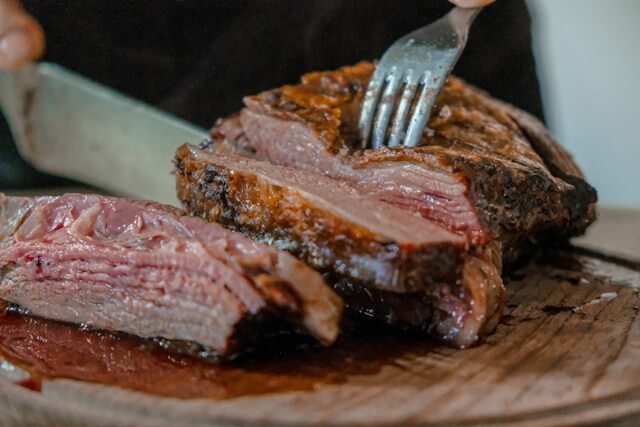
Sourcing Ingredients and Finding Substitutes
Most ingredients used in Argentine cuisine can be found in local supermarkets or Latin American grocery stores. If certain ingredients like specific Argentine cheeses or meats are hard to find, consider using substitutes that offer a similar flavor profile.
For example, if you can’t find queso fresco, try using feta or ricotta instead. If beef is difficult to come by, consider using other types of red meat such as lamb or pork.
When possible, it’s best to use locally-sourced and organic ingredients in your dishes. This not only supports local farmers and businesses but also ensures that your food is fresh and free from harmful chemicals.
Look for farmer’s markets or community supported agriculture (CSA) programs in your area for the freshest produce and meats.
One key ingredient in Argentine cuisine that may be harder to find is chimichurri sauce. If you can’t find it pre-made at a store, don’t worry!
You can easily make it at home with simple ingredients like garlic, parsley, olive oil, and vinegar. It’s a versatile condiment that can be used as a marinade, sauce, or dressing for various dishes.
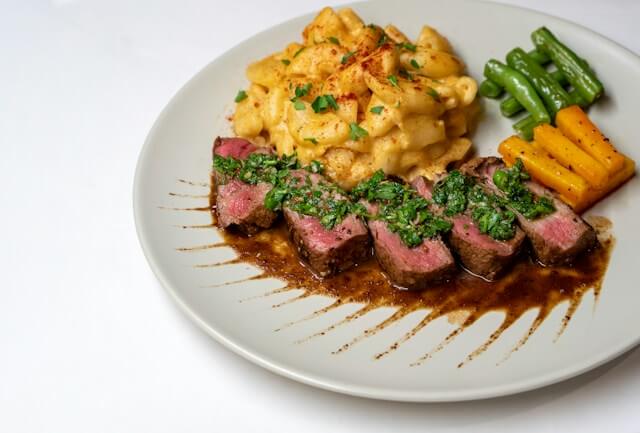
Traditional Cooking Methods
Traditional Argentine cooking methods often involve grilling, baking, and frying. Meats are frequently grilled or stewed, while vegetables and grains like rice and corn are often boiled.
Empanadas, a popular dish in Argentina, are made using a traditional method of folding and sealing dough before baking or frying.
The use of fire is an integral part of Argentine cooking. Asado, a traditional Argentine barbecue, involves grilling various types of meats over an open flame. This method is often used for special occasions and gatherings with friends and family.
Another commonly used cooking method in Argentina is the use of clay ovens. These ovens are heated using firewood and can reach very high temperatures, allowing for the perfect crispy crust on breads and pizzas.
Argentina also has a strong tradition of fermented foods. Sauerkraut, pickled vegetables, and kombucha are just some examples of fermented foods that have been incorporated into Argentine cuisine. These fermented foods not only add unique flavors to dishes but also provide health benefits, as they are rich in probiotics.
The use of herbs and spices is also prominent in Argentine cooking. A popular spice blend used in many dishes is chimichurri, made from a mix of herbs such as parsley, oregano, and garlic. This flavorful sauce is often used as a marinade or condiment for grilled meats.
When it comes to desserts, dulce de leche reigns supreme in Argentina. This caramel-like spread is made by slowly heating condensed milk and is used in a variety of sweet treats such as cakes, cookies, and ice cream.
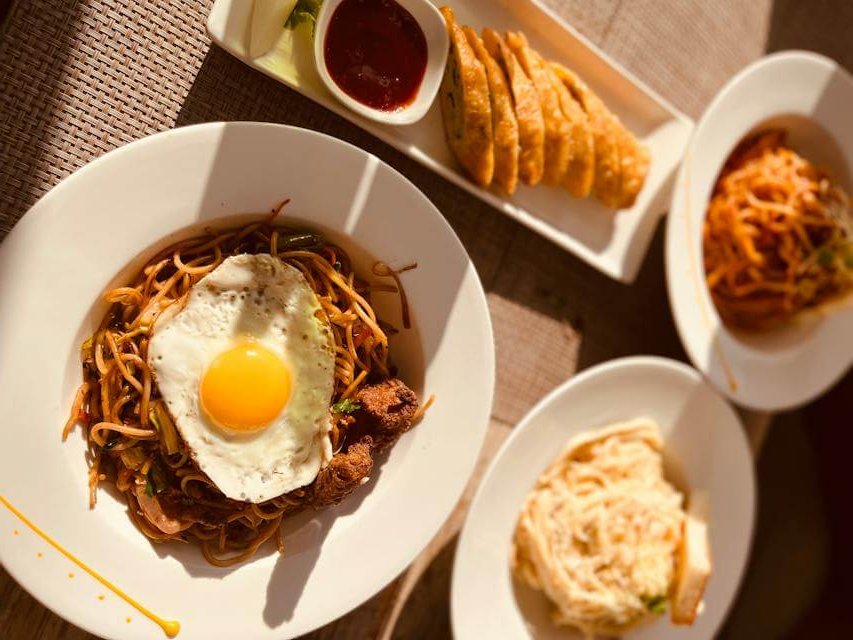
Taste Profile and Dominant Flavors
Argentine cuisine offers a balance between savory and sweet flavors. While some dishes feature a hint of spice from local peppers, Argentine cuisine is not typically spicy.
Instead, it relies on the natural flavors of quality ingredients such as grass-fed beef, fresh herbs, and seasonal produce.
The dominant flavor in Argentine cuisine is umami, the savory taste often associated with meat. This is due to the country’s long history of cattle farming and production of high-quality beef.
In fact, Argentina is renowned for its succulent steaks and grilling techniques.
Other common flavors in Argentine cuisine include garlic, onion, oregano, and parsley. These herbs are used to enhance the natural flavors of dishes without overpowering them.
In addition to these traditional ingredients, there has been a recent resurgence in incorporating native Andean ingredients into Argentine cuisine. For example, quinoa has become a popular grain used in salads or as a replacement for rice.
Seasonal produce also plays a crucial role in Argentine cuisine. Locally grown fruits and vegetables are used to create vibrant and fresh dishes, such as empanadas filled with corn or squash.
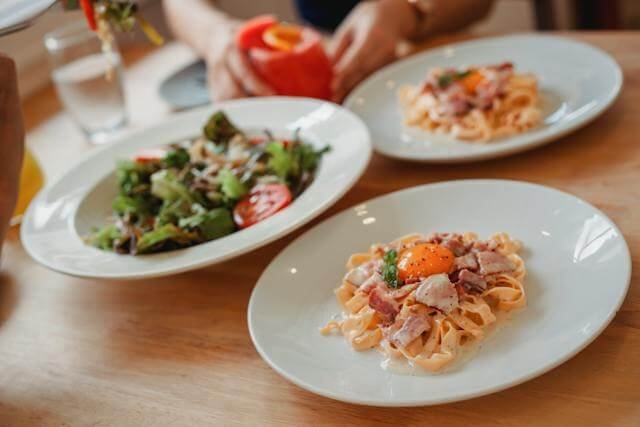
Cultural Significance and History
Argentine cuisine reflects the country’s rich history and natural resources. Each dish tells a story of the land, whether it’s the fresh beef from Argentina’s vast pampas, the hearty pasta dishes reflecting the country’s Italian influence, or the ubiquitous use of dulce de leche, a testament to Argentina’s love for sweets.
The country’s cuisine is a unique blend of indigenous traditions, European influences, and global flavors.
Indigenous cultures in Argentina have been present for thousands of years and were the original inhabitants of the land. Their diet consisted mostly of corn, beans, potatoes, and quinoa, which are still common ingredients in traditional Argentine dishes today.
These native foods have been adapted over time to create new dishes that reflect the country’s cultural heritage.
During the colonization period in the 16th century, Argentina was heavily influenced by Spanish and Italian immigrants.
They brought with them their own culinary traditions and introduced new ingredients such as beef, wheat flour, and various spices. This fusion of cultures created a diverse cuisine that has evolved over centuries.
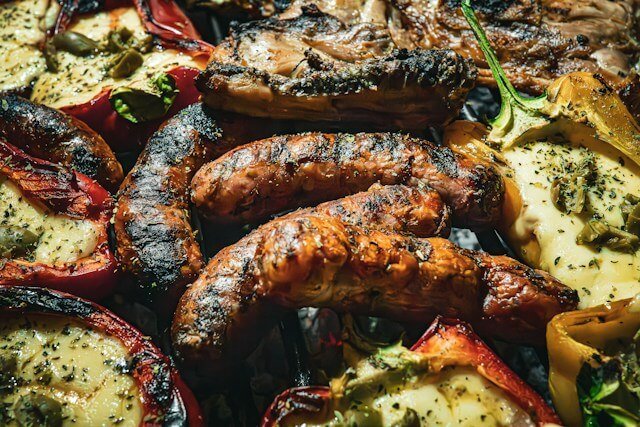
Dietary Restrictions and Allergies
Given the heavy reliance on various meats, dairy products, and gluten (in the form of bread and pasta), chefs should be mindful of potential allergies and dietary restrictions.
However, with the widespread use of vegetables, grains, and legumes, there are plenty of delicious Argentine dishes that cater to different dietary needs.
Health Factor and Modifications
While some Argentine dishes can be rich due to the use of meat and dairy, many others feature nutrient-dense ingredients like whole grains, legumes, and vegetables.
As a personal chef, you can make healthier versions of traditional dishes by controlling the amount of fat and salt used. For example, instead of frying empanadas, try baking them or using a healthier oil like olive oil. You can also incorporate more plant-based proteins and swap out heavy creams for lighter options like coconut milk.
Another way to make Argentine food healthier is by focusing on fresh and seasonal ingredients. This will not only enhance the flavor of your dishes, but also ensure that you are incorporating a variety of nutrients into your meals.
Consider visiting local farmers markets or joining a CSA (Community-Supported Agriculture) program to source high-quality produce.
Additionally, many traditional Argentine recipes include red meat as the main protein source. However, you can offer modifications for clients who may be looking for alternative sources of protein such as chicken, fish, tofu, or tempeh. This can also appeal to those following a vegetarian or vegan diet.
Incorporating more whole grains into your Argentine dishes is another way to boost the nutritional value. Swap out white rice for quinoa, use whole wheat flour in empanada dough, and offer gluten-free options for clients with dietary restrictions.
Furthermore, reducing added sugars and using natural sweeteners like honey or maple syrup can make a big difference in the healthiness of your dishes. You can also experiment with incorporating fresh fruits as natural sweeteners in desserts or adding them as toppings on savory dishes like salads or grilled meats.
Another tip for making Argentine food healthier is to reduce the amount of salt used in cooking. Instead, enhance flavors with herbs, spices, and citrus juices.

Traditional Accompaniments
Argentine meals are often accompanied by breads, rice, and a variety of side dishes. Popular beverages include mate, a traditional South American drink, and Argentine wines. Desserts are commonly served at the end of a meal, with dulce de leche being a favorite.
Breads
In Argentina, bread is an essential part of every meal. We offer a variety of artisanal breads made with organic flour and natural yeast for maximum flavor and nutrition. Our bakers use traditional techniques to create crusty baguettes, soft rolls, and fluffy loaves that will perfectly complement your main course.
Rice
Rice is a staple side dish in Argentine cuisine, and we take it to the next level with our organic jasmine rice. Grown by local farmers who utilize sustainable farming practices, our rice is full of flavor and nutrients. We also offer a delicious arroz con leche (rice pudding) as a sweet treat for dessert.
Empanadas
No Argentine meal is complete without empanadas, and ours are made with love using only the freshest organic ingredients. Our traditional beef filling is cooked with onions, bell peppers, and spices before being wrapped in a flaky homemade dough. For vegetarians, we offer a savory spinach and cheese option that is sure to please.

Presentation and Serving
Argentine food is traditionally served family-style, with communal dishes placed in the center of the table. This approach encourages sharing and enhances the social aspect of dining. At The Organic Personal Chef, we believe that presentation and serving are just as important as the quality of the food itself.
Our team takes great care in creating a visually appealing and inviting table setting for your meal. We use natural elements such as wooden platters, slate boards, and handcrafted ceramics to showcase our dishes. These earthy materials not only add to the aesthetic appeal but also align with our commitment to using sustainable and eco-friendly products.
Also, pay attention to small details like garnishes and sauces to elevate the overall look of each dish. Our goal is not only to satisfy your taste buds but also to create an experience for all your senses.
Variations and Special Equipment
Regional variations are common in Argentine cuisine, reflecting the country’s diverse geography and cultural influences. No specific equipment is needed beyond what is typically found in a well-stocked kitchen.
Here’s a list of some essential tools, utensils, pots and pans often used when preparing Argentinian foods:
Chef’s Knife: A versatile tool used for chopping, slicing, and dicing ingredients.
Cutting Board: A sturdy surface where ingredients are cut. It helps protect countertops and makes clean-up easier.
Asado Grill or Parrilla: An essential tool for Argentinian cuisine. This is used for grilling meats in the traditional Argentinian barbecue style, known as Asado.
Chimichurri Bowl and Spoon: A small bowl and spoon are needed to prepare and serve chimichurri, the traditional Argentinian sauce.
Large Pot or Dutch Oven: Ideal for making traditional Argentinian stews or soups, such as locro.
Frying Pan/Skillet: Used for frying and sautéing. Essential for dishes like provoleta (Argentinian provolone cheese).
Saucepan: Necessary for making sauces or boiling smaller quantities of food.
Baking Dish: Essential for baking dishes like empanadas or pastel de papas (potato pie).
Roasting Pan: This is used for roasting meats, such as the traditional matambre arrollado.
Mixing Bowls: Necessary for combining ingredients. Used in almost every recipe.
Wooden Spoon: A must-have for stirring. It’s gentle on your pots and pans and doesn’t conduct heat.
Measuring Cups and Spoons: Necessary for accurate measurements of ingredients.
Tongs: Particularly useful when grilling, to turn and serve meat without piercing it.
Peeler: Used for peeling vegetables like potatoes or carrots.
Whisk: Useful for mixing, beating, and whipping ingredients.
Grater: Used for grating cheese or vegetables.
Remember, the tools you’ll need can vary depending on the specific Argentinian dishes you plan to prepare.
Wondering what tools a personal chef might need? I’ve written an extensive article for you – A Comprehensive List Of Must-Have Tools and Essential Items for the Personal Chef

Pre-preparation and Personal Preferences
Some elements of Argentine cuisine, like preparing dough for empanadas or marinating meats, require advance preparation. Always consider your client’s personal preferences and dietary needs to ensure a satisfying dining experience.
Here are some tips to keep in mind when prepping for an Argentine-inspired meal:
1. Empanada dough should be made at least one day ahead of time and refrigerated overnight for optimal results. This allows the dough to rest and develop flavor.
2. When marinating meats, choose your ingredients carefully based on your client’s preferences. For example, if they do not eat red meat or are vegetarian, opt for a marinade using vegetables or tofu instead.
3. Consider using traditional Argentine herbs and spices such as oregano, paprika, cumin, and garlic in your marinades for an authentic flavor profile.
4. If your client has dietary restrictions or allergies, make sure to use alternative ingredients that still fit within the Argentine cuisine. For example, instead of using wheat flour for empanadas, try using almond or coconut flour.
5. When choosing ingredients, opt for locally-sourced and organic options whenever possible to support sustainable farming practices and provide your clients with the freshest and most nutritious meals.
6. Don’t be afraid to experiment with fusion flavors by incorporating other Latin American influences into your Argentine-inspired dishes. For example, adding a dash of Mexican chili powder or Brazilian chimichurri sauce can add an interesting twist to traditional Argentine dishes.
7. Communication is key when preparing a meal for someone else. Make sure to discuss any dietary restrictions or preferences with your client beforehand to ensure that you are providing them with a truly personalized and enjoyable dining experience.
Argentine Food For Personal Chefs
And our culinary journey through Argentina has come to an end. From the famous empanadas to the mouth-watering asado, we have discovered a country filled with unique and delicious dishes. But it’s not just about the food, it’s about the rich culture and traditions that are intertwined with every bite. As personal chefs, it is our duty to constantly push ourselves out of our comfort zones and explore new flavors, ingredients, and cooking techniques. Argentine cuisine has shown us that there is so much more to discover in the world of food.
So now comes the fun part – putting what we’ve learned into action! Grab your chef’s apron and get ready to impress your clients with these exciting Argentine recipes. Whether you’re catering for a 5-course dinner party or whipping up a quick weeknight meal, incorporating elements of Argentine cuisine will surely leave a lasting impression.
Let’s also not forget about the importance of sourcing fresh and high-quality ingredients when recreating these dishes. Support local farmers and businesses while elevating your own culinary skills. And don’t be afraid to add your own personal touch to these traditional recipes, after all, that’s what makes us unique as chefs!
As we conclude this blog post on Argentine food for personal chefs, I hope you feel inspired and motivated to add some South American flare to your menus. The art of cooking is constantly evolving, and it’s up to us as chefs to keep pushing boundaries and exploring new flavors. So go ahead, embrace the adventurous spirit of Argentine cuisine and let your creativity run wild in the kitchen!
Here are some of my favorite tools for providing my personal chef service
As an experienced personal chef, I’ve found that the secret to creating mouthwatering dishes goes beyond just having a passion for food. It’s also about using the right kitchen tools. Today, I’m going to share with you my must-have kitchen items that help me bring my culinary creations to life.
1. Chef’s Knife
The first item on my list is a high-quality chef’s knife. It’s the most versatile tool in my kitchen, perfect for chopping, slicing, and dicing. My preference is for a Global Chef’s Knife, known for the edge and the way they are balanced.
2. Cast Iron Skillet
Next up is a good old cast-iron skillet. From searing steaks to baking cornbread, this pan does it all. I love the Lodge Cast Iron Skillet, which retains heat beautifully and adds a nice crust to anything you cook.
3. Stainless Steel Pots and Pans
A set of stainless steel pots and pans is essential for a variety of cooking techniques. They’re great for simmering, boiling, and sautéing. All-Clad’s Stainless Steel Cookware Set is my go-to choice for its exceptional performance and durability.
4. Immersion Blender
An immersion blender makes pureeing soups, making smoothies, and blending sauces a breeze. I suggest the Braun Multiquick Hand Blender, which is powerful, easy-to-clean, and highly versatile.
5. Digital Thermometer
To ensure perfectly cooked meats every time, a digital thermometer is a must. The ThermoPro TP19 Waterproof Digital Meat Thermometer provides speedy and accurate readings, ensuring your roast chicken or prime rib is cooked to perfection.
6. Silicone Spatula
A silicone spatula is a chef’s best friend for its versatility. It’s heat-resistant, non-stick, and perfect for everything from folding batter to stirring sauces. I recommend the OXO Good Grips Silicone Spatula.
7. Stand Mixer
Lastly, for avid bakers, a stand mixer is a game-changer. The KitchenAid Artisan Series 5-Qt. Stand Mixer isn’t just a pretty face; it makes mixing doughs and batters effortless.
These are the tools that I use daily in my personal chef service. Remember, quality tools make a difference, but they don’t have to break the bank. Start with the basics and add on as you grow more comfortable and adventurous in the kitchen.
Happy cooking!

